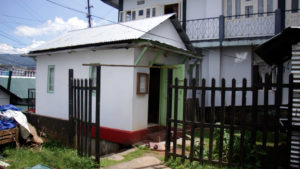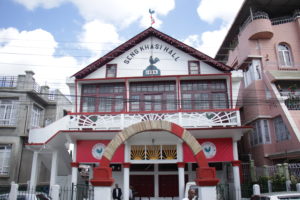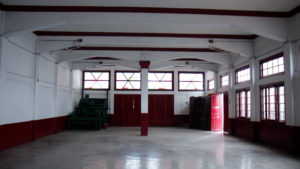 Amid the onslaught of westernisation and the heavy influence of Christianity in the 1800s, the traditional practices of the Khasis were at the edge of a precipice – one nudge and the identity would be lost forever.
Amid the onslaught of westernisation and the heavy influence of Christianity in the 1800s, the traditional practices of the Khasis were at the edge of a precipice – one nudge and the identity would be lost forever.
This was when 16 Khasi youths came together and formed the Seng Khasi on November 23, 1899, to protect their indigenous religion, culture and unique language.
In this episode of Shillong’s Iconic Structures, we are featuring the Iing Seng (official building) of the Seng Khasi and its instrumental role in upholding the traditions and culture of the Khasis. Seng Khasi translates as the organisation of the Khasi people.
 Located in Mawkhar, one of the busiest and highly populated areas in Shillong, the Iing Seng, with pitch-roofing, a fluttering Seng Khasi flag and a rooster atop, invariably exudes a traditional aura. Bereft of greenery due to its location, the structure is visible from afar as the premises itself boasts of structures like the monolith – something that every Khasi is familiar with.
Located in Mawkhar, one of the busiest and highly populated areas in Shillong, the Iing Seng, with pitch-roofing, a fluttering Seng Khasi flag and a rooster atop, invariably exudes a traditional aura. Bereft of greenery due to its location, the structure is visible from afar as the premises itself boasts of structures like the monolith – something that every Khasi is familiar with.
Let’s dive into the history of the Seng Khasi:
 In the face of the British incursion, the 16 educated Khasi men understood that sans culture and religion, the identity of the Khasis would be weakened; which prompted them to form the Seng Khasi in 1899 under the guidance of Babu Jeebon Roy Mairom, also known as the “Father of Modern Khasis”.
In the face of the British incursion, the 16 educated Khasi men understood that sans culture and religion, the identity of the Khasis would be weakened; which prompted them to form the Seng Khasi in 1899 under the guidance of Babu Jeebon Roy Mairom, also known as the “Father of Modern Khasis”.
Spearheading this movement were 16 young men – Rash Mohan Roy Nongrum, Chandranath Roy Jaid Dkhar Sawian, Kupardon Dkhar, Mohan  Roy Rynjah, Rubi Sing Swer, Borton Hynniewta, Raibon Singh, Nalak Singh Iangblah, Joshon Tariang, Said Sing Dkhar, Ram Charan Dympep, Robert Dkhar, Rajin Shon Marbaniang, Nadon Roy Diengdoh, Roton Muni War and Indromuni Jyrwa.
Roy Rynjah, Rubi Sing Swer, Borton Hynniewta, Raibon Singh, Nalak Singh Iangblah, Joshon Tariang, Said Sing Dkhar, Ram Charan Dympep, Robert Dkhar, Rajin Shon Marbaniang, Nadon Roy Diengdoh, Roton Muni War and Indromuni Jyrwa.
The Seng Khasi also received tremendous support from the Brahmo Samaj, the monotheistic reformist movement of the Hindu religion – which in the late 19th century had already made its presence felt in most parts of Khasi Hills.
The history of the Seng Khasi is incomplete without mentioning its different religious festivals – the Shad Suk Mynsiem (Dance of the joyful hearts) held in April each year, the Seng Kut Snem (Foundation Day) held annually on 23rd November – the first celebration  being in 1900 and the Annual Pilgrimage to Lum Sohpetneng (Navel of Heaven) held on the first Sunday of February each year. Apart from this, the Seng Khasi also hosts an archery competition one week before the Seng Kut Snem at Polo ground where archers from across the Khasi Hills participate.
being in 1900 and the Annual Pilgrimage to Lum Sohpetneng (Navel of Heaven) held on the first Sunday of February each year. Apart from this, the Seng Khasi also hosts an archery competition one week before the Seng Kut Snem at Polo ground where archers from across the Khasi Hills participate.
Meghalaya boasts of its cultural uniqueness, its colourful festivals, its myths and folklores – all of which define the origin and identity of the indigenous tribes of the state. Credit goes to organisations like the Seng Khasi for their continuing effort to remain an unshakeable pillar against external forces that seek to dilute the customary rites and practices of the indigenous tribe.
(Watch the full version of the story only on our YouTube Channel @TheShillongTimes)



